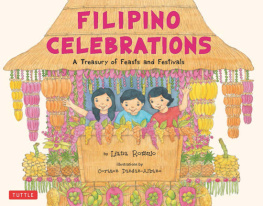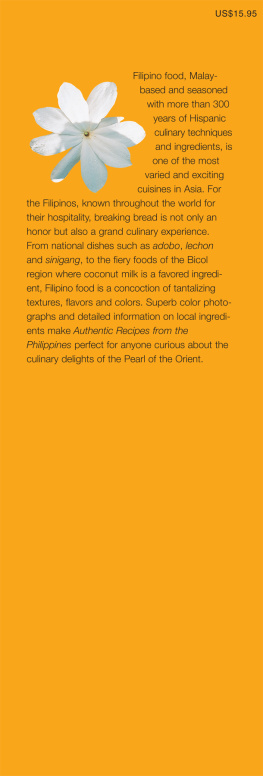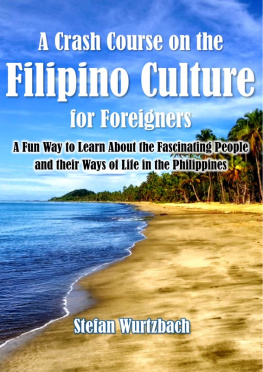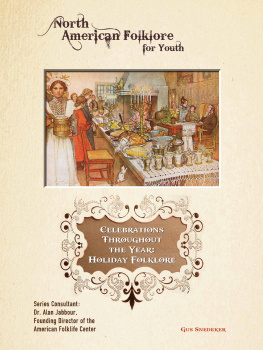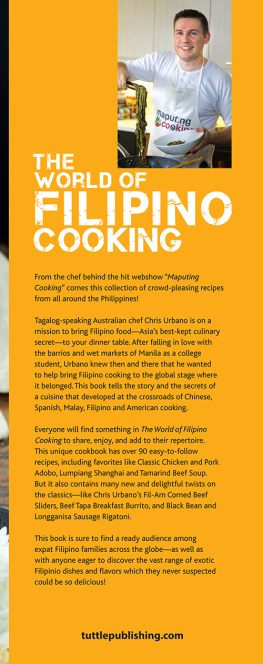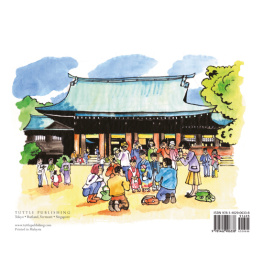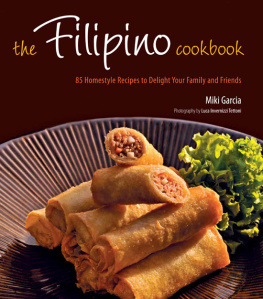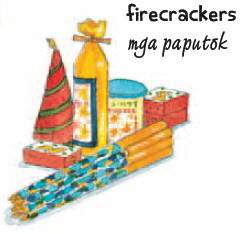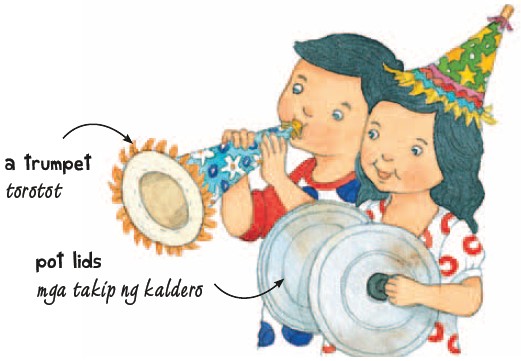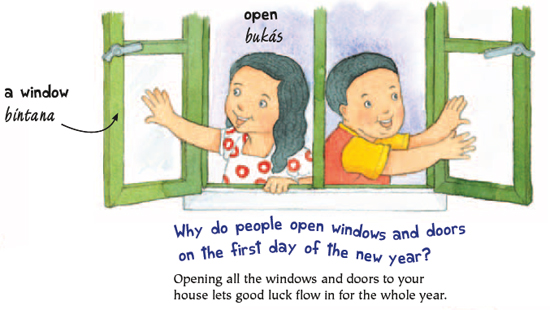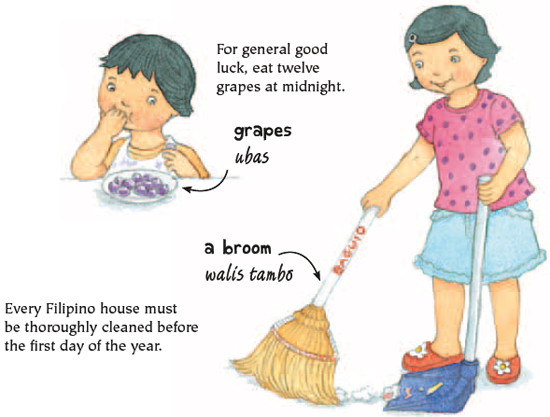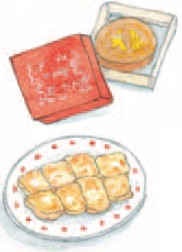Liana Romulo - Filipino Celebrations: A Treasury of Feasts and Festivals
Here you can read online Liana Romulo - Filipino Celebrations: A Treasury of Feasts and Festivals full text of the book (entire story) in english for free. Download pdf and epub, get meaning, cover and reviews about this ebook. year: 2012, publisher: Tuttle Publishing, genre: Home and family. Description of the work, (preface) as well as reviews are available. Best literature library LitArk.com created for fans of good reading and offers a wide selection of genres:
Romance novel
Science fiction
Adventure
Detective
Science
History
Home and family
Prose
Art
Politics
Computer
Non-fiction
Religion
Business
Children
Humor
Choose a favorite category and find really read worthwhile books. Enjoy immersion in the world of imagination, feel the emotions of the characters or learn something new for yourself, make an fascinating discovery.
- Book:Filipino Celebrations: A Treasury of Feasts and Festivals
- Author:
- Publisher:Tuttle Publishing
- Genre:
- Year:2012
- Rating:3 / 5
- Favourites:Add to favourites
- Your mark:
Filipino Celebrations: A Treasury of Feasts and Festivals: summary, description and annotation
We offer to read an annotation, description, summary or preface (depends on what the author of the book "Filipino Celebrations: A Treasury of Feasts and Festivals" wrote himself). If you haven't found the necessary information about the book — write in the comments, we will try to find it.
In the Philippines, people love to celebrateholidays are filled with music and dancing, sometimes with colorful costumes, and always with great food! Rich with detailed watercolors and cultural flavor, Filipino Celebrations: A Treasury of Feasts and Festivals makes major holidays (like Christmas) and family gatherings (like weddings and birthdays) come alive.
From these pages, children will learn the history of each holiday, its cultural influences, the varied ways in which people celebrate in different regions of the Philippines, special customs and food, key words and phrases (in English and Tagalog), and more. Games, songs, and other activities invite young readers to join in the fun. New and familiar holidays take on a special flavor as children learn about the diverse cultures that make up this wonderful island nation. Perfect for Filipino-American families looking to share the unique culture of the Philippines, educators interested in promoting multiculturalism in the classroom, or anyone interested in the country, Filipino Celebrations will encourage children ages five to ten to participate and learn while having fun.
Celebrations and festivals include:
Liana Romulo: author's other books
Who wrote Filipino Celebrations: A Treasury of Feasts and Festivals? Find out the surname, the name of the author of the book and a list of all author's works by series.

